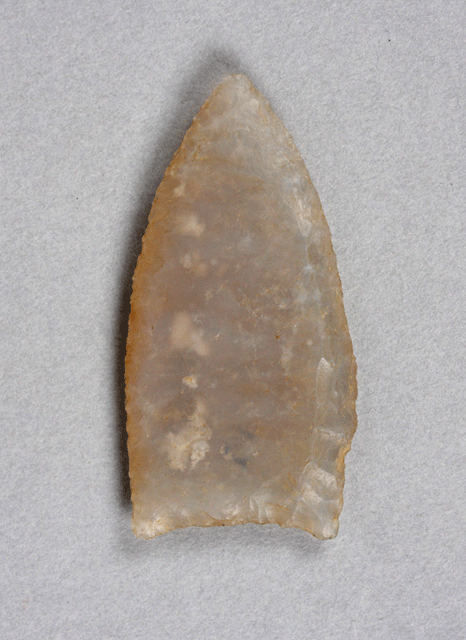

2007.17.1, atlatl dart point ("Folsom Point") of chalcedony
Folsom complex (9000–8000 B.C.)
UNM field school collections
Photograph by B. Bernard
The Folsom complex immediately postdates the Clovis complex and represents the remains of specialized bison hunters. Together, Clovis and Folsom are the best-known examples of what is called the fluted point tradition, characterized by atlatl points with "flutes" (channels) on the faces of the points.
Once the founding hunting-oriented groups spread throughout the New World, in many areas they began shifting to a diet based on a wide variety of plant and animal foods (the Archaic stage). On the Great Plains and in adjacent grassland areas, where large herds of bison allowed a continued emphasis on hunting, Paleoindian groups continued until as late as 6,000 B.C. After the Folsom complex, those Plains bison hunters made only points without basal channels.
All content copyright © Maxwell Museum of Anthropology, University of New Mexico. High-resolution versions of photographs may be ordered from the Maxwell Museum's photo archives. Please make note of the catalogue numbers. For more information please visit the photo archives web page
Page last revised on May 24, 2011. Please report problems to toh@unm.edu